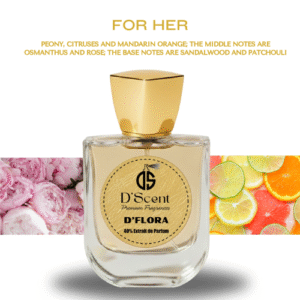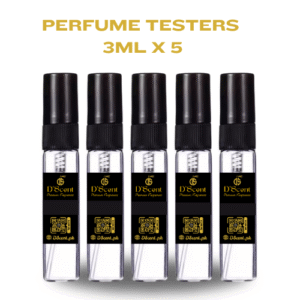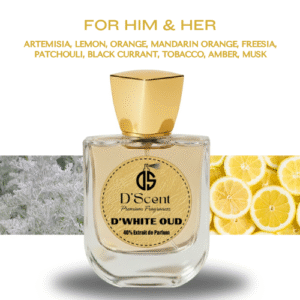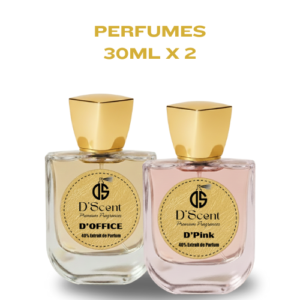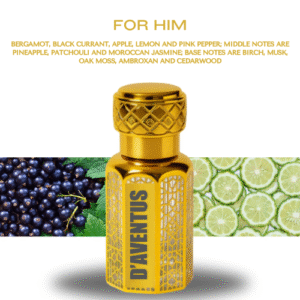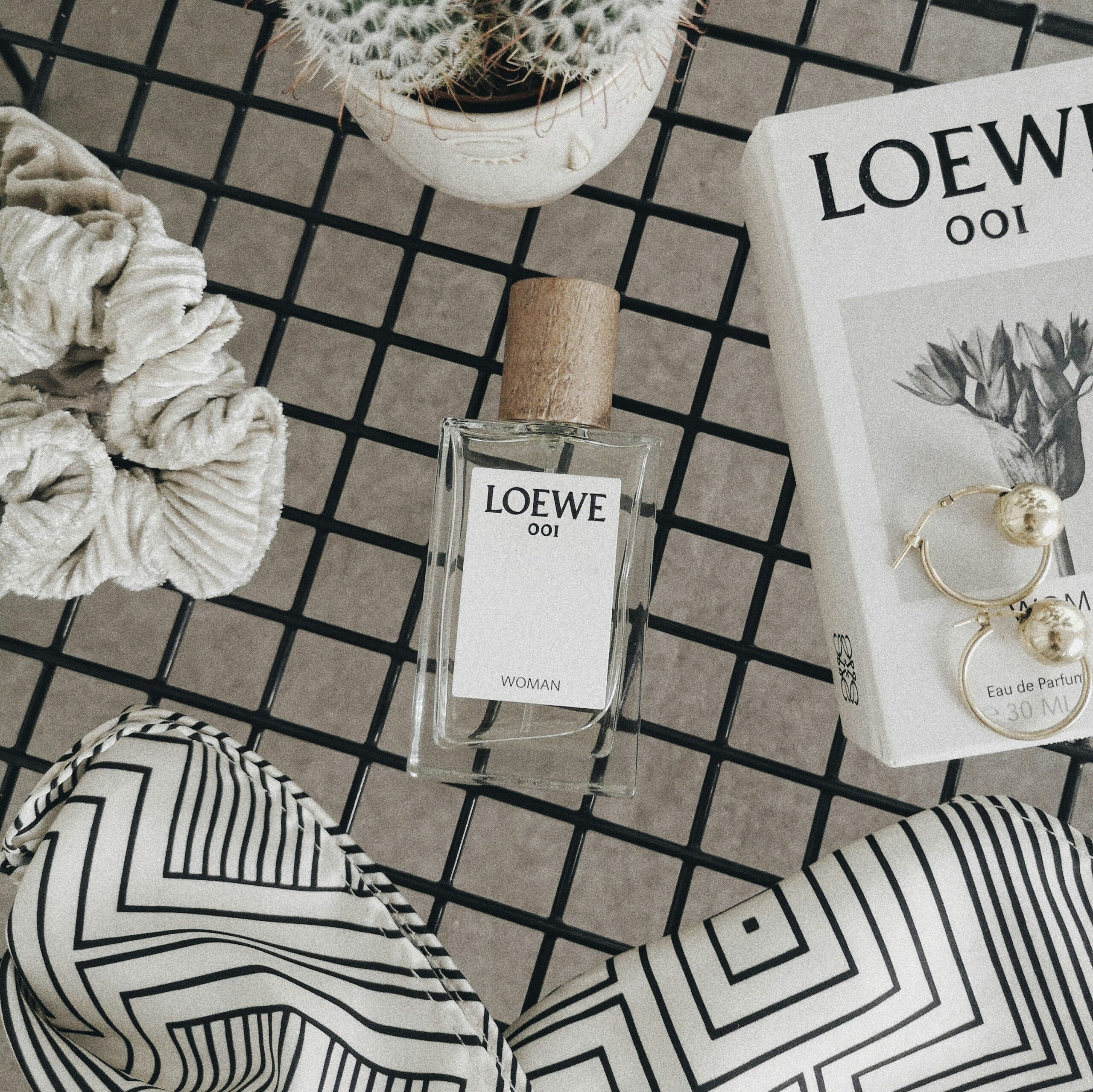Introduction to Iconic Fragrances
Fragrances have long been a significant aspect of personal grooming and style, especially in men’s perfumery. Iconic fragrances are those that have transcended time and trends, capturing the essence of masculinity and individual expression. These scents often evoke emotions, memories, or even cultural identities, making them an essential part of a man’s daily ritual. The allure of an iconic fragrance lies not only in its captivating scent but also in its ability to create a lasting impression.
To classify a fragrance as iconic, certain criteria must be met. A fragrance must resonate with a wide audience, often becoming emblematic of a particular era. Furthermore, it should possess a unique composition that distinguishes it from others, showcasing a blend of notes that balance freshness with depth. Iconic fragrances frequently reflect changing societal norms and fashion trends, making them a mirror of the times in which they were developed.
Cultural significance plays a pivotal role in the status of an iconic fragrance. Many classic scents have been associated with notable figures or movements, amplifying their importance in the collective memory. These fragrances can enhance a man’s personal style, adding an invisible yet powerful layer to his identity. In a world filled with fleeting trends, certain fragrances persist, proving that their appeal is timeless and universally appreciated.
The enduring popularity of these fragrances signifies their impact, as they are often referenced in discussions about personal style and sophistication. As we explore the list of the most iconic men’s fragrances throughout history, it is essential to recognize their contributions to the art of perfumery and their role in shaping the modern man’s grooming routine.
Historical Context of Men’s Fragrances
Men’s fragrances have a rich and varied history, reflecting not only the evolution of olfactory preferences but also broader societal changes and the development of concepts of masculinity. The origins of perfumery can be traced back to ancient civilizations, such as Mesopotamia and Egypt, where aromatic substances were utilized in religious rituals and personal grooming. These early fragrances often employed natural ingredients like myrrh and frankincense, believed to possess sacred properties and enhance a man’s standing within his community.
As time progressed, the use of fragrances shifted with cultural developments. By the Middle Ages, a growing emphasis on cleanliness and personal appearance emerged, particularly among European nobility. The introduction of new synthetic materials in the 19th century, combined with advancing distillation techniques, allowed perfumers to create more complex and diverse scent combinations. This period marked the birth of the modern perfume industry and the rise of brands specifically targeting men’s fragrance markets.
The 20th century heralded significant changes in gender norms, greatly impacting fragrance trends. With the emergence of advertising and consumerism, men’s fragrances became a symbol of sophistication and power, often intertwined with concepts of masculinity and virility. Iconic fragrances like Chanel No. 5 and Old Spice began to convey aspirational lifestyles, while advertising campaigns targeted men by linking scents to ideals of success and allure.
Throughout the decades, societal shifts, such as the feminist movement and changing notions of masculinity in the late 20th century, further influenced the fragrance landscape. Contemporary men’s fragrances often reflect a diverse range of expressions, catering to varying tastes and identities, emphasizing individualism over traditional masculine tropes. This continuous evolution highlights not only shifting olfactory preferences but also the dynamic interplay between cultural values and men’s fragrance trends throughout history.
Top Iconic Fragrances of the 20th Century
The 20th century was a transformative period for the fragrance industry, giving rise to many iconic men’s fragrances that have left an indelible mark on both scent and culture. Among the most celebrated is Chanel No. 5, originally created in 1921. Though marketed towards women, its pioneering blend of floral and aldehydic notes transcended gender norms and influenced a generation. Its sleek bottle and association with glamorous Hollywood icons solidified its status as a timeless classic.
Another noteworthy fragrance is Dior Sauvage, launched in 2015. This scent, though slightly outside the 20th-century timeline, represents the culmination of decades of men’s fragrance evolution. Inspired by the ruggedness of the wilderness, it combines fresh bergamot with spicy and woody undertones. Its immediate popularity reflects a growing trend toward more potent and daring fragrances, resonating strongly with contemporary audiences seeking boldness in their scent choice.
Furthermore, Acqua di Gio by Giorgio Armani, introduced in 1996, is renowned for its fresh aquatic notes. This fragrance captures the essence of nature and the Mediterranean lifestyle, making it a staple for men of various ages. Its clean and crisp profile appealed to those looking for a versatile scent suitable for both casual and formal occasions.
Each fragrance mentioned here embodies a distinct aspect of the 20th-century cultural zeitgeist, revealing the evolving preferences of men in the world of perfumery. Whether it was the luxurious allure of Chanel No. 5 or the adventurous spirit of Dior Sauvage, these scents reflect a broader narrative of identity and expression that continues to resonate today.
Modern Classics: Iconic Fragrances of the 21st Century
As we traverse through the 21st century, several men’s fragrances have carved out a prestigious place in the world of olfactory delights. These fragrances not only reflect the essence of modern masculinity but also embody innovative compositions that have captivated the senses of fragrance enthusiasts globally. Brands such as Dior, Chanel, and Tom Ford have continually introduced groundbreaking fragrances that define contemporary luxury.
One of the most notable fragrances to debut in the 21st century is Dior’s Sauvage, launched in 2015. With its raw freshness, Sauvage combines notes of bergamot, pepper, and ambroxan, creating a fragrance that is both exhilarating and versatile. This scent has been embraced by a wide demographic, making it a staple in many collections. Its vibrant composition signals a daring and adventurous spirit, which aligns closely with Dior’s sustained commitment to pioneering unique fragrance experiences.
Similarly, the modern classic Bleu de Chanel, introduced in 2010, has redefined masculine scents with its sophisticated and bold profile. This fragrance brings forth notes of citrus, woods, and a hint of spice, making it suitable for both casual and formal occasions. The collaboration between creator Jacques Polge and the brand has resulted in a fragrance that not only resonates with contemporary sensibilities but also encapsulates timeless elegance.
Moreover, Tom Ford’s Noir, released in 2012, adds a layer of sensuality to the spectrum of modern fragrances. With its complex blend of spicy, floral, and woody notes, Noir cultivates an aura of mystery and intrigue. This fragrance is emblematic of the evolution of men’s fragrances—a shift from traditional, simplistic compositions to multifaceted, expressive ones that cater to individual identity.
These iconic fragrances of the 21st century reflect not only the artistic prowess of the brands behind them but also a deeper understanding of the evolving preferences in the fragrance community. They have successfully established themselves as modern classics, setting the benchmark for future innovations in men’s scents.
The Art of Creating a Signature Scent
Crafting a signature scent is a delicate art that requires a harmonious blend of creativity, skill, and an understanding of fragrance fundamentals. Men’s fragrances often encompass a variety of notes that can be broadly categorized into three families: top, middle, and base notes. The top notes are the initial scents that one experiences upon application, typically fresh and light, such as citrus or herbal components. These notes offer an immediate impact but evaporate relatively quickly. Following the top notes, the middle notes emerge, which are more robust and can include florals, spices, or fruits, forming the heart of the fragrance. Finally, the base notes, which are often rich and deep—like woods, resins, or musks—provide lasting impressions that linger on the skin long after the top and middle notes have faded. This structured layering creates a well-rounded and sophisticated fragrance.
The role of perfumers in this intricate process cannot be overstated. These scent architects meticulously select and blend raw ingredients to craft a fragrance that resonates with the intended audience. Their expertise allows them to balance contrasting notes, creating a scented narrative that ranges from bold to subtle. This highly specialized field draws on an expansive palette of materials including both natural and synthetic components, affording perfumers the ability to develop unique and memorable creations that reflect modern sensibilities and traditions alike.
Choosing a fragrance that reflects personal identity is a subjective yet enlightening journey. It is essential to consider lifestyle, values, and preferences when selecting a signature scent. An individual’s choice may fluctuate based on occasions or emotional states, reinforcing the notion that fragrance is not just about smell but also serves as a potent form of self-expression. By understanding the intricacies of men’s fragrances, one can select a scent that transcends mere perfumery, encapsulating one’s essence and leaving a lasting impression.
Cultural Impact of Iconic Fragrances
The realm of men’s fragrances transcends mere olfactory pleasure; it fundamentally intertwines with cultural identity, social norms, and personal expression. The impact of iconic men’s fragrances has been significant across various mediums such as advertising, celebrity endorsements, film, and literature. Each facet contributes to the fragrance’s status and its deep-rooted influence in society.
Advertising has played a foundational role in shaping the perception of fragrances. Through dynamic campaigns, fragrance brands have cultivated a narrative that associates their products with luxury, desirability, and sophistication. Iconic advertisements often feature stunning visuals and compelling storytelling that not only promote a scent but evoke emotions and aspirations. For instance, the long-established marketing strategies of brands like Chanel and Armani have imprinted their fragrances into popular culture, often leading the consumer to associate the scent with a specific lifestyle or image.
Celebrity endorsements have further amplified the visibility of these perfumes. When renowned personalities lend their names to fragrances, it creates a powerful allure and increases consumer interest. Icons such as David Beckham and Johnny Depp have not only endorsed but also embodied the fragrances they promote, infusing them with their unique personas. This portrayal encourages fans and admirers to connect with the fragrance on a personal level, making it more than just a scent but a piece of the celebrity’s identity.
Additionally, the representation of fragrances in film and literature has further cemented their cultural relevance. Characters in films often use fragrances to convey character traits or emotions, enhancing the narrative’s depth. Literature, too, has employed scent as a literary device to evoke memory or emotion, demonstrating its profound ability to resonate within the human experience. The combination of these cultural elements solidifies the significance of iconic men’s fragrances in shaping societal standards of masculinity, allure, and sophistication throughout time.
Fragrance Trends Through the Decades
The evolution of men’s fragrances has seen remarkable transformations from the 1960s to the present day, reflecting societal changes, cultural influences, and personal expression. In the 1960s, robust and earthy scents, often characterized by woody and spicy notes, dominated the market. Popular among this era were fragrances that conveyed masculinity and strength, with brands like Old Spice leading the charge. Such olfactory profiles not only emphasized a rugged allure but also resonated with an evolving notion of male identity.
By the 1970s, the fragrance landscape began to diversify, introducing aromatic and floral components. This decade marked a noteworthy shift as men started to embrace softer and more sensual scents. The introduction of unisex fragrances blurred traditional gender lines, fostering a more inclusive approach to scent. During this time, iconic fragrances like Paco Rabanne’s Pour Homme became emblematic of the era, incorporating aromatic herbs into their compositions.
The 1980s heralded an era of extravagance with bold, opulent fragrances that featured rich, intense accords. Fresh citrus notes began to emerge, heralding a move towards cleaner scents that would gain prominence in the following decade. This shift was evidenced by the introduction of more sophisticated, lighter fragrances, such as Calvin Klein’s CK One in the 1990s. This period was seminal in establishing a more universal fragrance palette, favoring versatility and everyday wear.
As we moved into the 2000s and beyond, men’s fragrances increasingly adopted fresh and clean profiles, reflecting a broader trend towards minimalism and simplicity. The emphasis shifted to lighter notes including aquatic and citrus accords, which appealed to a modern sensibility. This evolution in fragrance preferences signifies not just a change in scent but also a response to cultural dynamics, lifestyle choices, and shifting societal norms. The longevity and impact of a fragrance today often mirror these ongoing trends, highlighting the cyclical nature of olfactory fashion.
How to Choose and Wear Men’s Fragrances
Selecting the right men’s fragrance is a subjective experience that often reflects an individual’s personality, mood, and occasion. To begin, it is essential to identify your preferred fragrance family—citrus, woody, floral, or spicy. Each category offers unique characteristics that resonate differently with various types of individuals. For instance, a fresh citrus fragrance might be ideal for those with an energetic and youthful spirit, while a rich, woody scent could appeal to someone who prefers a more classic or sophisticated aesthetic.
Once you have an idea of the fragrance family that suits you best, it is important to test several options. Sampling scents on your skin, rather than on paper strips, provides a more accurate representation of how a fragrance will interact with your body chemistry. When testing, apply a small amount on your wrist, wait for a few moments, and then smell it periodically throughout the day. This allows you to experience how the scent evolves and develops over time, as fragrances often change from the initial top notes to heart notes and finally to base notes.
Incorporating techniques such as layering can also elevate your scent-wearing experience. Layering involves applying complementary scented products, such as body lotion or deodorant, to amplify the fragrance’s longevity and presence. Additionally, strategic fragrance application can enhance its effectiveness. Common pulse points, like the wrists, neck, and behind the ears, generate warmth, which can help project the fragrance more prominently. To ensure a lasting effect, consider reapplying your fragrance throughout the day; spritzing it on clothing, hair, or even in the air and walking through it can allow the scent to envelop you without overwhelming your environment.
Ultimately, personal preference plays a crucial role in selecting and wearing men’s fragrances. Regularly revisiting your fragrance choices based on seasons or changes in lifestyle can keep your scent signature fresh and relevant.
Conclusion: Celebrating Timeless Masculinity Through Fragrance
Fragrance plays a profound role in shaping and expressing one’s identity. For men, the right scent represents much more than just an aromatic composition; it is a reflection of personal style, emotional resonance, and social presence. The act of carefully selecting a fragrance can serve as an integral part of a man’s daily routine, allowing for a unique method of self-expression and reinforcing individual characteristics that resonate with his personality. The most iconic men’s fragrances have stood the test of time, establishing themselves as symbols of masculinity across generations.
From the fresh notes of citrus to the warm, sensual undertones of woods and spices, each classic fragrance tells its own story and evokes powerful emotions. These scents have the power to transport individuals to specific moments in their lives, creating lasting memories associated with particular experiences. As such, the enduring appeal of iconic fragrances lies in their ability to evoke nostalgia and provide comfort, both to the wearer and those around them. They enable men to forge connections and to leave an indelible mark on their surroundings.
In a rapidly evolving world where fashion and trends constantly change, the integrity of timeless fragrances remains constant. Men are encouraged to explore different scents, discovering those that resonate most deeply with their essence and lifestyle. Whether one leans towards an adventurous, bold fragrance or a more subtle and sophisticated aroma, the important aspect is the connection formed with the fragrance itself. Ultimately, a well-chosen scent can enhance confidence, create allure, and express individualism, celebrating the rich tapestry of masculinity through the art of fragrance.


